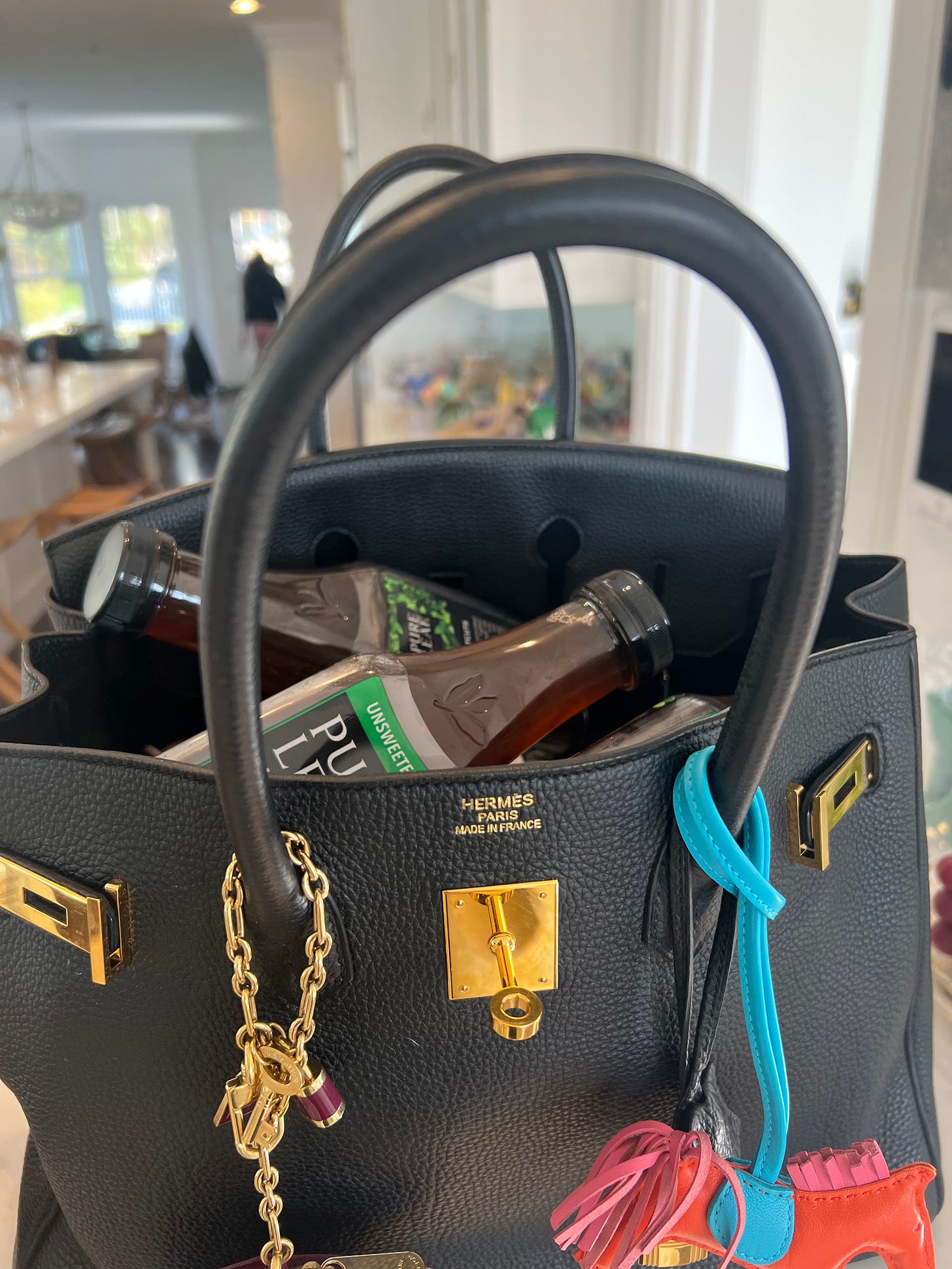The Blue Box Secret Society: Inside the world of Hermès and The Diminishing Marginal Returns of Exclusivity.
Hermès blends scarcity, exclusivity, and allure. As luxury flirts with ubiquity and visibility rises, does the magic fade? Dive into diminishing returns and the economics shaping timeless aspiration.
Enter the Birkin—more than a handbag, it's a mythical creature of the fashion world, elusive and seductive, with an allure that whispers you'll never catch me. But don’t be fooled; this isn’t just about deep pockets…it’s about deeper connections. So, what happens when exclusivity itself starts to lose its edge? When a bag built on scarcity flirts with the guise of abundance? We'll use economics to unpack the price of exclusivity, the science of second-hand markups, and Diminishing Returns Marginal of Exclusivity.
Because let’s be honest, when it comes to Birkins, money talks—but exclusivity screams.
Let’s Digest!
The Birkin Bag, a fashion phenomenon that exceeds society's fundamental perceptions of wealth. The elusive accessory does not solely equate to financial status but to something far less attainable… access. There is a lore attached to Hermès in its entirety, with a lexicon to match. Social media users have popularized terms like “Birkin Bait”, describing items bought to increase one's Hermès profile to increase chances of being offered a Birkin. Another popularized term and perhaps my favorite is “Hermès Gods”; the mythical council in the sky that allocates the supply of quota bags. If you’ve done your compulsory Birkin Baiting you may get in with the Hermès Gods, a.k.a VIP or disciple. Reaching VIP status is a complex mix of loyalty, faith (or trust in the brand), and access - NOT one’s bank balance. While this is the general rule, the uptake in the second-hand market is challenging the equilibrium.
There is an important distinction to be made between the second-hand market for “pristine” Hermès bags and vintage second-hand fashion. The world of Hermès resale often plays into a sense of consumer anxiety and, for lack of a better term, desperation. Take the coveted Mini Kelly, for example. It retails for about $8,000, a fraction of the $25,000 to $35,000 you might expect to pay on the second-hand market. Simple math shows that if you are a disciple of “Hermès Gods”, you could buy three Mini Kellys for the price of one from a reseller. The resale business has very little variable capital investment, so the markup is essentially all profit. And if consumers are willing to pay above retail, resellers will take full advantage. Once you’ve paid the equivalent of a mortgage on a bag, you’re of course posting it on IG.
What happens when the perception of exclusivity begins to diminish?
This is the central question for understanding how luxury brands like Hermès maintain their mystique, despite increasing exposure. To explore this, we’ll turn to the theory of diminishing returns, applying it to exclusivity in the luxury market. What I call the Theory of Diminishing Marginal Returns on Exclusivity explains how the perception of exclusivity creates a delicate balance for luxury brands, allowing them to remain aspirational while continually capitalizing on both their limited availability and high demand. But first we’ll dive into the finicky nature of exclusivity and exposure.
I could go on and on about the impact of social media on perception and exposure, but let me start here: I still vividly remember the first time I saw a Birkin. I was 8 years old, celebrating New Year’s at the Renaissance Hotel in Times Square. The elevator opened to a Laura Dern-esque woman, one hand holding her husband’s, the other gripping a MASSIVE purple Birkin (now, with my expertise, I’d guess it was a Birkin 40, though at 8, everything seemed enormous). My aunt nudged my mom to look, and that’s where the lore of the Birkin began for me.
That moment was in-person, rare and memorable, compared to how frequently we encounter luxury items online today. Social media has exponentially increased our exposure to seemingly everything, making it appear as though more people own Birkins than ever before. The truth, though, is that the internet allows us to glimpse the lives—and handbags—of people we’d never encounter in person. When someone says, “It feels like everyone has a Birkin these days,” I counter with, “It feels like we’re simply seeing more of the world and what people wear.” Social media isn’t a “real place”; it’s a curated algorithm, with platforms like TikTok and Instagram feeding us content tailored to our interests. If you love Hermès, you’ll inevitably see more Hermès. This phenomenon skews perceived exclusivity, making luxury items seem commonplace. While you’re unlikely to spot ten Birkins in a day on the streets (unless you’re strolling the Miami Design District), you might scroll past dozens in minutes, giving the illusion of ubiquity.
However, realized exclusivity—the actual scarcity created by cost barriers, limited production, and gatekeeping—remains intact. Social media may democratize access to information and imagery, but it doesn’t change the economic inaccessibility of luxury goods for most people. Bernstein research reported that there are between 12,000 and 70,000 Birkins produced per year and 200,000 in existence. (compared to The Louis Vuitton Never Full’s presumed 1,000,000+) With each bag taking up to 20 hours to hand stitch the limited production is not only a strategy to maintain exclusivity a testament to the extraordinary craftsmanship. The visibility of luxury items online amplifies their aspirational value, widening the gap between those who own them and those who aspire to.
Keep reading with a 7-day free trial
Subscribe to Consumer Digest to keep reading this post and get 7 days of free access to the full post archives.






